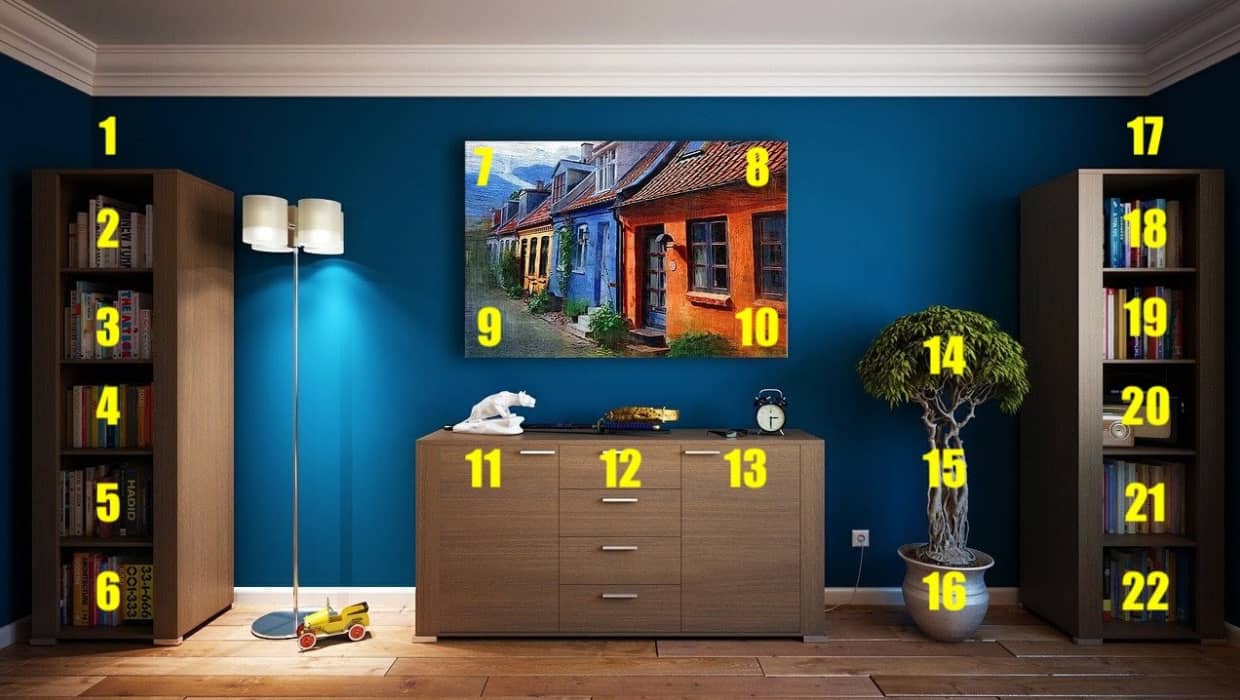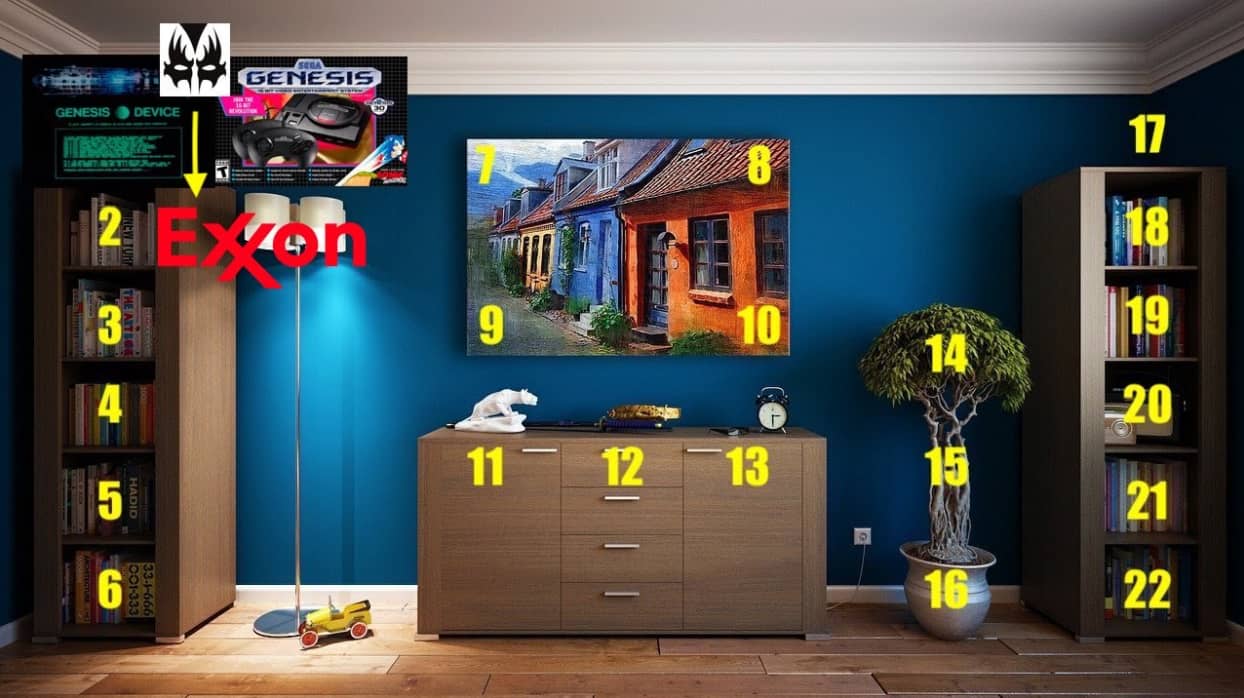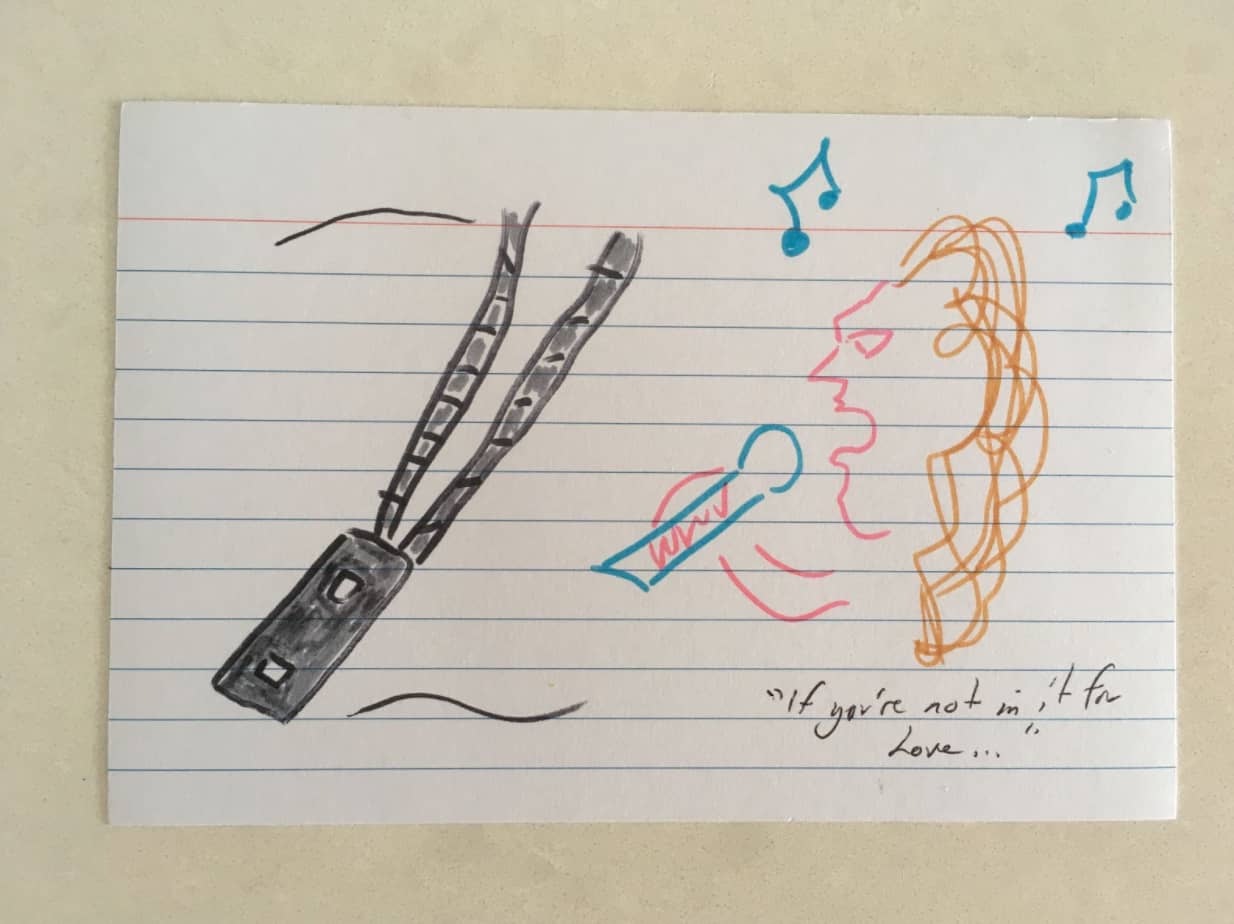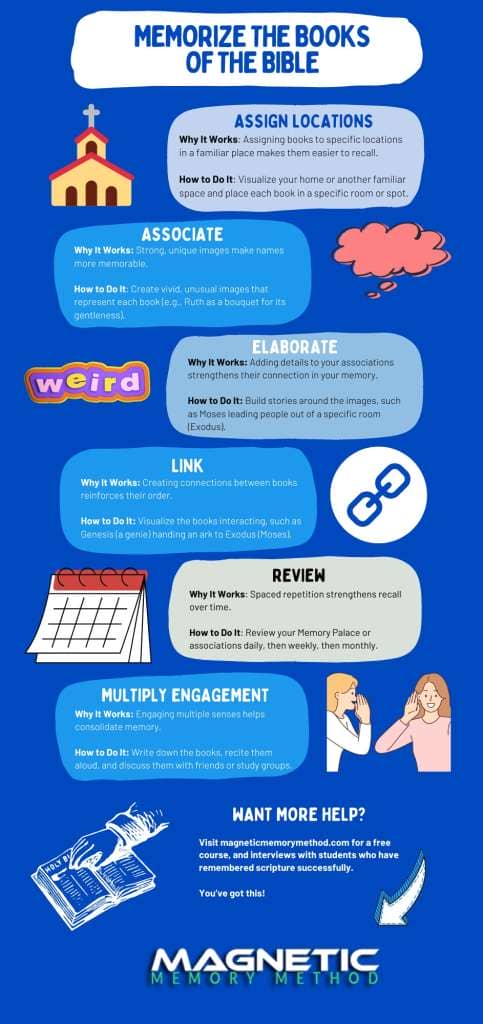Podcast: Download
Subscribe: Apple Podcasts | RSS
 There are a number of ways to memorize the books of the Bible.
There are a number of ways to memorize the books of the Bible.
But few are as direct and streamlined as the approach you’re about to discover.
What I’m going to teach you today is also incredibly robust, far more so than using a song or flash cards to memorize the name of each book.
Does the technique you’re about to learn require a bit of setup?
Yes.
But that small amount of effort? It’s going to feel like a drop in the bucket when you realize you can use the same technique to also memorize any verses from the Bible you wish.
Ready to master both the books of the Bible and have the ability to memorize verses too?
How to Memorize the Books of the Bible in Order
There are 66 books in most modern Bibles. You can find them in order based on the Old Testament and the New Testament using this handy list.
Some of the names will be familiar to you already, but memorizing even the most well-known names in order can still be a challenge. Often, this is because your memory is not trained to deal with large volumes of unusual names in a linear order.
Other names will be difficult because of how they sound and how they’re spelled. But I’ll also show you how to deal with harder names of books like Zephaniah. Soon, they will all be very easy to remember.
But let’s focus on memorizing the order first. For that, it’s important to have a technique that makes it simple and easy to think back to each book in its exact order within the Bible.
One: Learn The Memory Palace Technique
Learning to use a Memory Palace is essential for all learning tasks that involve large amounts of information. But this ancient tool is especially useful when it comes to memorizing Biblical verses.
I do have one student who memorized 66 Psalms in a way he felt was without a Memory Palace. However, as we spoke, it was clear that the same basic use of spatial memory was still in place. Logically speaking there’s no getting around the method of loci for this kind of goal.
To use this technique, you will create a journey throughout a familiar location. This journey will have space for 66 units of information, one spot for each book of the Bible.
Depending on the room you choose, you can fit this journey into one room by using four walls something like this:

If you’re just beginning with this technique, this amount of information crammed into a single room might be too cramped.
That’s okay. Just make the Memory Palace journey more spaced out. You’ll need more rooms, but that’s okay. This memory skill is a marathon, not a race.
Also, I would suggest you consider having two Memory Palaces. One for the Old Testament and one for the New Testament. In this way, you can work on memorizing their books as two separate learning projects. It will make this learning project more manageable.
Two: Learn to Place Memorable Associations
The next step is to use your imagination to “pair” an association with a location in your Memory Palace.
For example, you would place an image or association that reminds you of the word “Genesis” in position one of the Memory Palace. It could be a Sega Genesis, or perhaps you remember the Genesis Device and Genesis cave from Star Trek II: The Wrath of Khan.
If those references don’t work, you could even think of someone you know named “Gene,” such as Gene Simmons, the bassist for the rock band Kiss. Even better, you can combine all three of these associations for striking effect when you revisit the Memory Palace journey.

Coming up with associations really just means looking at the letters of the words you need to memorize and thinking about similarities.
For example:
- Exodus brings to mind Exxon oil
- Leviticus brings to mind Lev Goldentouch
- Numbers brings to mind the numbness you feel after a trip to the dentist
To start thinking up associations like this rapidly, have a look at the pegword method.
Three: Elaborate Your Associations
It’s not enough to assign associations. You also want to make them strange and striking using a process memory scientists call elaborative encoding.
So let’s say that you use the example of a dentist numbing your gums to help you remember that the book of Numbers is at position four in your Memory Palace. (This association works because “numb” sounds similar to Numbers.)
To elaborate it, you want to imagine:
- Feeling that numbness as a physical sensation
- Hearing your voice trying to speak through numbed lips
- Imagine what it looks like to have a syringe injecting “Numbers” into your gums
- Experience the emotions involved
- Include any tastes or smells
- Think about the size of the needle and make it exaggeratedly huge

These exaggerations only take a second per each book of the Bible. They will help you remember them with greater ease when you think back to where you stored them in the Memory Palace.
Now, there’s something to consider here that some students have let me know about. They know that it’s possible to memorize the Bible, both in part and in whole.
However, they do not like the idea of filling their minds with strange images and ideas.
As I discussed in Where Did Noah Park the Ark?, the Bible has lots of interesting images. It’s possible to draw upon them instead.
Plus, as actor Ashley Strand shared on my podcast when discussing how he memorized the Book of Mark in its entirety for a performance, analytical thinking is also helpful.
At the end of the day, there’s no right or wrong answer. You need to follow what’s right for you.
I personally fall on the side of the great religious memory masters like Augustine and Aquinas. They both considered imagination and memory to be gifts from God. Since God himself placed a rainbow in the sky as a reminder following quite a visually dramatic incident (flooding the world), we’re quite alright to use a bit of weird imagery to remember his Word.
Although less famed than Augustine and Aquinas, Peter of Ravenna was a famed mnemonist who also memorized a lot of Scripture. He openly admits that he used all kinds of lewd information to do it and suggests in The Phoenix that people sometimes overthink these things.
Four: Link Your Associations
How do you know the Book of Deuteronomy follows Numbers?
Often, the Memory Palace journey is more than enough. You just mentally move from station to station.
However, it also makes sense to use the link and story method.
One way you could help yourself memorize the order of the books of the Old Testament is to have the associations act upon each other.
In other words, it’s not just that you have Gene Simmons using a Sega Genesis controller to start the Genesis Device from Star Trek II.
You have this image interacting with the Exxon image. For example, you can have Gene Simmons firing the Genesis device at an Exxon station.

Likewise, you can have someone named Lev or Lee or any “Le” image that makes sense to you fleeing from the Exxon station. By linking the associations from station to station throughout the Memory Palace, you give yourself an extra layer of “recall power.”
Five: Review For Long Term Retention
Once you have all 66 books assigned with associations, you want to revisit the entire journey a few times to get all of them into long term memory.
We need to do this because memory and learning always require some level of repetition. The Memory Palace helps us manage the repetition and reduce the amount we need.

Basically, you want to follow these patterns:
- Forward through the Memory Palace
- Backward through the Memory Palace
- Skipping the stations
These patterns will give primacy effect and recency effect to each station in your Memory Palace through a process memory scientists call serial positioning. It’s basically the same thing as using spaced repetition software, but much more powerful.
What makes it more effective than software are flashcards is what is called “active recall.” When we put a little bit of “pressure” on our memory to recall facts we’ve learned, our memories develop much faster.
Six: Follow Up With More Than Memory
Learning how to memorize scripture at any level is fun and easy. If you have any doubts that you can do it, check out my student Matt Barclay’s incredible demonstration video. He recites one of the psalms in front of his congregation, something he memorized while recovering from cardiac arrest.
And to really go the distance like Matt and get the material deep into memory, you want to learn it in context.
To make that process riveting:
- Read as much as you can about the Bible and also memorize facts about each book
- Write summaries of each book and your thoughts about their meaning
- Discuss individual Books of the Bible with others as often as possible
- Listen to lectures about each book in order
During this stage, you can also add facts to the names of the books you’ve already memorized. For example, if you want to remember that Zephaniah is prophetic literature, you can add an image of a prophet profiting to the core image in the Memory Palace.
Seven: A Bonus Step For Those Who Prefer Flash Cards
If the Memory Palace technique is not an option for you, here’s the best possible way to use flash cards.
Instead of feeding yourself the answer on the back of the card, have a drawing that triggers your memory of the word.

For example, you could draw a zipper to help you remember Zephaniah. You could even cut out a picture of Shania Twain or write her name beside the Zipper.
In the mnemonic example above, I have drawn a zipper and a few lines to suggest the letter “Z.” I’m no artist, but I’ve drawn a singer and given myself a clue by adding some of the lyrics from a very famous Shania Twain song.
Then, when looking at the card, the guessing process helps me form memories because it gives my brain a bit of a workout.
In other words, this form of “memory triggering” creates a brain game that promotes learning instead of cheating you out of it.
But chances are you can learn to love the Memory Palace technique, and this free course shows you how:
Remember All Of The Books Of The Bible With Ease
As you’ve seen, there’s a fast and easy way to memorize each and every book of the Bible.
Sure, it takes a bit of setup.
But given the amount of time and hassle it saves in the end, I’m confident you’ll find the frontloaded effort was well worth it.
The important thing is to embrace the setup. It takes different people different amounts of time, but anyone can do it. And the best part is that each and every bit of information you memorize brings you one step closer to God.
So what do you say?
Do you feel equipped to memorize the books of the Bible in order? Let me know in the discussion or feel free to enter any questions you have. I’ll chime in a.s.a.p.
Related Posts
- Can You Memorize Books Page By Page Without Using Memory Techniques?
The answer? Probably not.
- How To Create And Use Your Own Sherlock Holmes Mind Palace
You can easily master the Sherlock Holmes Mind Palace. Follow the 5 steps in this…
- How to Memorize Paragraphs, Sentences, and Passages Fast
To learn how to memorize a paragraph, start with this special focus first. Learn how…





2 Responses
I think a lot of my past attempts at memory palaces have failed because my images were static and not linked to each other. Steps three and four seem to be what I was missing.
Thank you for this guide! There is always more to learn and room to improve when it comes to memory techniques.
I’m glad you found this, Max.
It is true that there’s always more to learn about memory techniques. Two decades of study in and I still discover new ways to use them. I recently updated the course with the “Infinity” Memory Palace technique, for example. It’s quite an interesting approach.